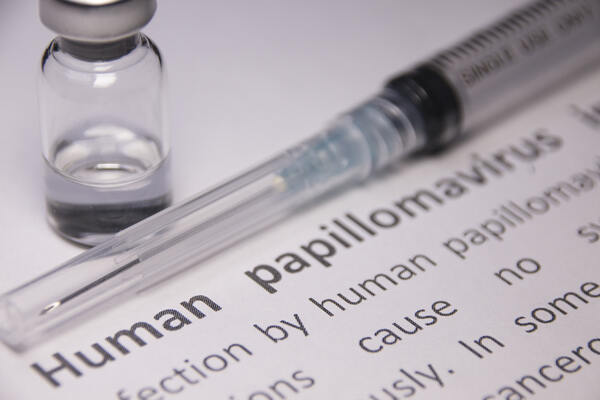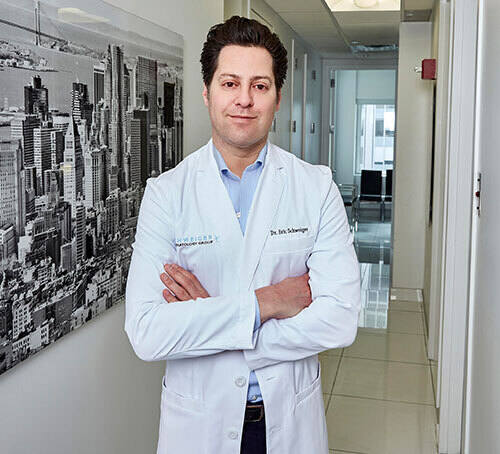All You Need to Know About HPV
Understanding the Most Common Sexually Transmitted Infection
HPV, or human papillomavirus, is the most common sexually transmitted infection. In fact, about 80% of sexually active Americans will develop HPV at some point. Most cases are harmless and go away by themselves. But sometimes, HPV can cause genital warts or even cancer.
Whether you’ve just been diagnosed, have had HPV for years, or are simply wondering whether or not you should get the vaccine, we’re here to help. Read on to learn about HPV symptoms, prevention, vaccination, treatment, and more.
Symptoms: How You Can Tell You Have HPV
More than 180 types of HPV exist. Most occur without any symptoms – which means you may not even know you’re infected.
In other cases, you might develop genital warts (caused by types 6 and 11). These warts are usually painless, although in rare cases, they can itch or be uncomfortable. Genital warts appear as small, fleshy bumps (often resembling cauliflower) on the anus, cervix, penis, scrotum, vagina, vulva, or urethra. On their own, the warts aren’t dangerous, but their presence can spread your HPV to others.
While less common, HPV can also cause warts to develop on other parts of the body: like the mouth, throat, tongue, hands, or feet. If this happens to you, it’s nothing to worry about: simply see a dermatologist to have your warts removed (we’ll talk more about this later on).
A few varieties of wartless HPV carry with them a high risk. For example, there are over 13 types of high-risk HPV that can lead to cancer, especially cervical cancer (usually caused by types 16 and 18).
If your HPV turns into cancer, you may experience the following symptoms:
- Irregular vaginal bleeding or discharge, pelvic pain, fatigue, nausea, and weight loss (cervical cancer).
- A sore throat, constant coughing, trouble breathing or swallowing, persistent ear pain, a lump in your throat, and weight loss (throat cancer).
- Changes in skin thickness or color, sores, pain, itching, lumps, and bleeding or discharge (cancer affecting the penis, anus, or vulva).
Spreading and Prevention: How to Protect Yourself and Your Partners
HPV spreads most often through sex – you can get it from genital skin-to-skin contact with an infected HPV patient (someone that’s been diagnosed). Even without current HPV symptoms, that partner can still pass the disease to you.
If you’re sexually active, you can lower your risk of developing HPV by carefully screening your partners, getting vaccinated, and encouraging any sexual partners to get vaccinated, too (more on this in a minute). Using condoms also helps lower your risk of infection.
If you already have HPV, we’d advise you to share this information with a new sexual partner.
Just because you’ve had HPV once doesn’t mean you can’t get it again. Since there are so many different types, you could potentially develop another form of it later on.
The HPV Vaccine
The HPV vaccine protects against genital warts and types of HPV that cause cancer. Since there are so many different types of HPV, getting a vaccine doesn’t guarantee that you won’t develop the infection at some point. But it greatly lowers your risk of infection. The vaccine consists of two or three shots, which you’ll get over the course of six months.
While it’s best to get the vaccine young (11 or 12 is recommended) so you’ll be protected before exposure, you’re eligible as young as 9 – and as old as 26. If you’re over 26 and want to get vaccinated, just talk to your medical provider.
Possible side effects include pain, redness, dizziness, fever, and nausea. Aside from pain and redness, though, these side effects are rare, and there are no serious safety issues with the vaccine – though you should not get it if you are pregnant.
How to Get Tested for HPV
If you’re a sexually active woman, it’s a good idea to get tested for HPV via a Pap test (also known as a Pap smear) on a regular basis. This doesn’t detect HPV directly. Instead, it detects abnormal changes in your cells, which can be a sign of HPV.
In certain situations, your doctor may recommend an HPV test instead of a Pap test. This test can catch some forms of high-risk HPV.
Unfortunately, there’s no way to test for HPV in men. But don’t despair! There are still plenty of things you can do to lower your chances of developing infection: like getting the vaccine and practicing safe sex. You might want to see a doctor if you notice genital warts or any symptoms of cancer.
There’s No Cure – But There Are Effective Treatments
There’s no cure for HPV. But rest assured, in most cases, the body heals itself after an HPV infection: often within one or two years.
Because of the quick recovery time, treatments focus on either removing the warts caused by HPV or preventing the infection from developing into cancer. In fact, most of the cancers caused by HPV can be prevented. For example, cervical cancer usually takes 10 to 20 years to develop, which means that if your doctor is regularly checking you for signs of HPV or cancer, you’ll probably be able to catch the infection in time to stop it.
If your Pap test shows abnormal results, your doctor may ask you to come back in six months for another test. If the second test shows more abnormal changes, then your doctor may recommend a colposcopy: a procedure used to find precancerous cells in the cervix. These cells can be removed via cryotherapy – a treatment that freezes the cells – or Loop Electrosurgical Excision Procedure – a treatment that uses an electrical current to remove cells.
Why You Should See a Dermatologist to Treat Genital Warts
Some patients find that HPV warts go away on their own. But this can take anywhere from three months to two years, and in many cases the warts will come back later – which can be very frustrating. If you don’t want to have to deal with genital warts for a long period of time, it’s best to get them treated by a dermatology provider.
Here’s why: while there are topical treatments for warts, there’s just no knowing how effective these will be. Plus, there’s always the chance that your warts will return. And since everyone’s skin is different, only a certified dermatologist can really tell you what treatment option will be most effective for you.
He or she can then use advanced techniques like cryotherapy (freezing the wart using liquid nitrogen) to remove the warts from your body in the fastest, most efficient way possible.
Because genital warts can spread your condition to others, we recommend seeking treatment for your warts even if you have no other symptoms.
HPV vs. herpes: what’s the difference?
HPV and herpes are both sexually transmitted infections, but there are several differences between the two:
- While there are over 180 different types of HPV, there are only two different types of herpes: herpes simplex virus type 1 and herpes simplex virus type 2.
- While HPV usually goes away within a few years, a person with herpes remains infected for life.
- Most HPV patients have no symptoms; others may develop genital warts. Herpes patients tend to develop cold sores (with virus type 1) or genital sores (virus type 2).
- In women, HPV is often diagnosed via a Pap test. Herpes is diagnosed through a blood test or tissue sample, in both women and men.
At the end of the day, HPV may sound scary. But if you’re like most Americans, you probably have nothing to worry about. Of course, it’s still good to be on your guard; and by taking preventative steps, you can protect both your own health and the health of those you love.
If you’re concerned you might have genital warts, contact us to make an appointment with a Schweiger Dermatology Group provider at 844-DERM-DOC or contact@schweigerderm.com.

